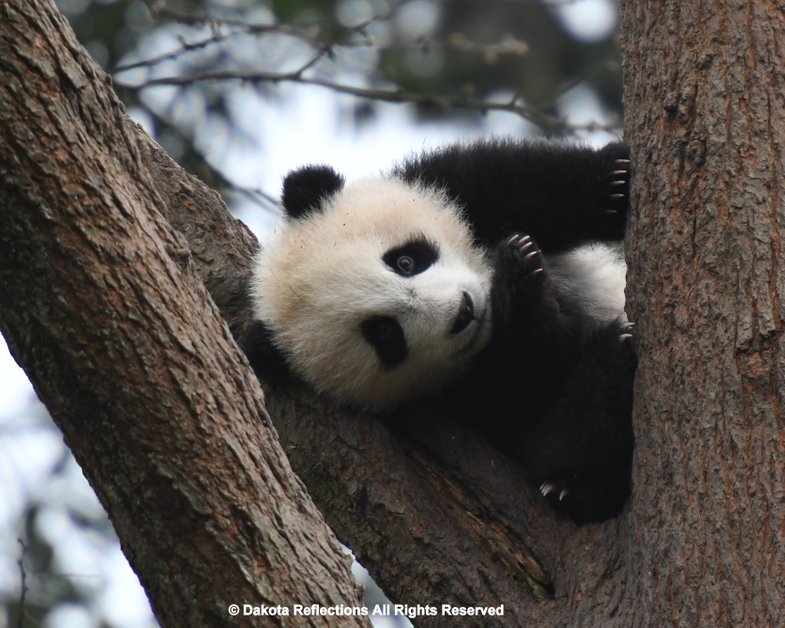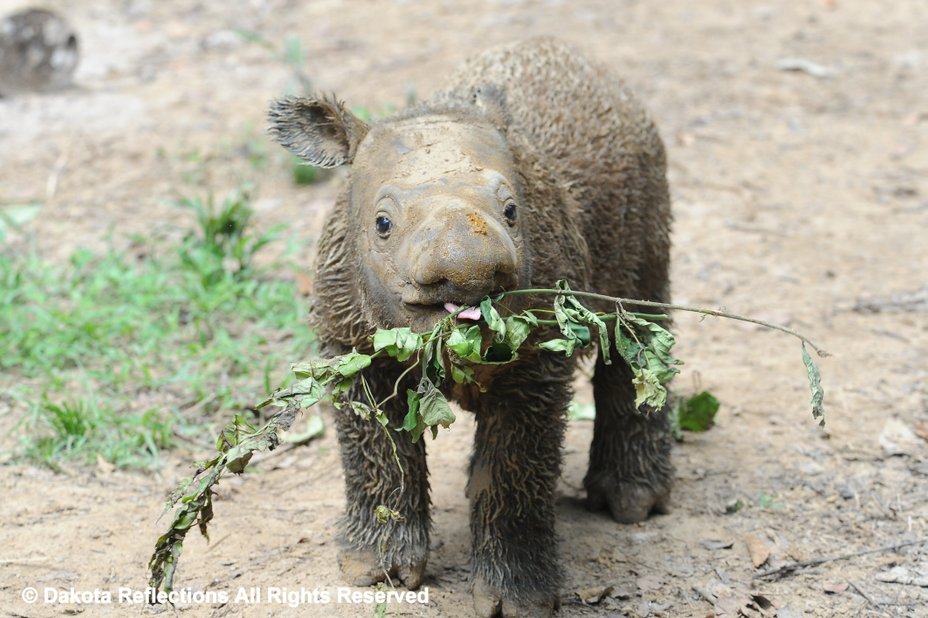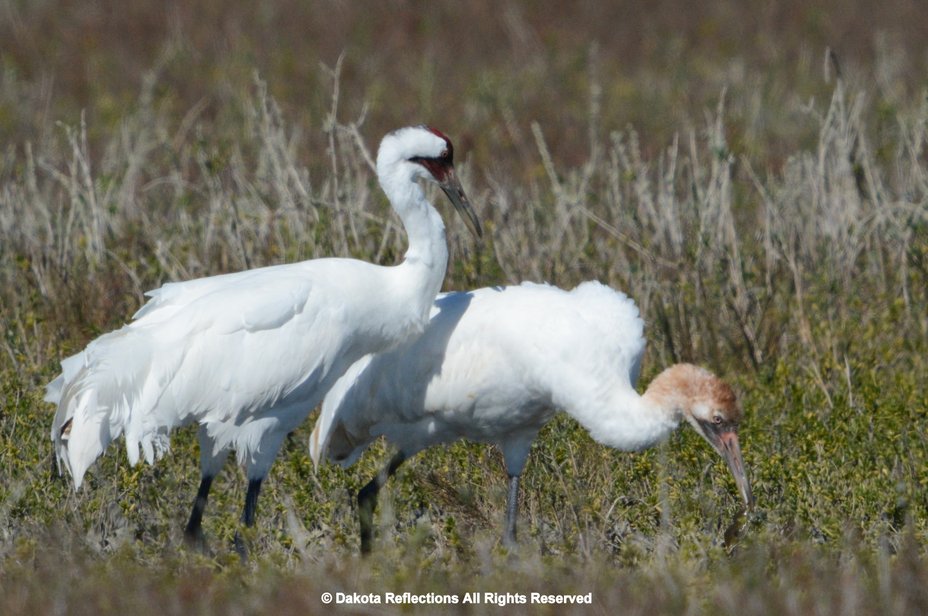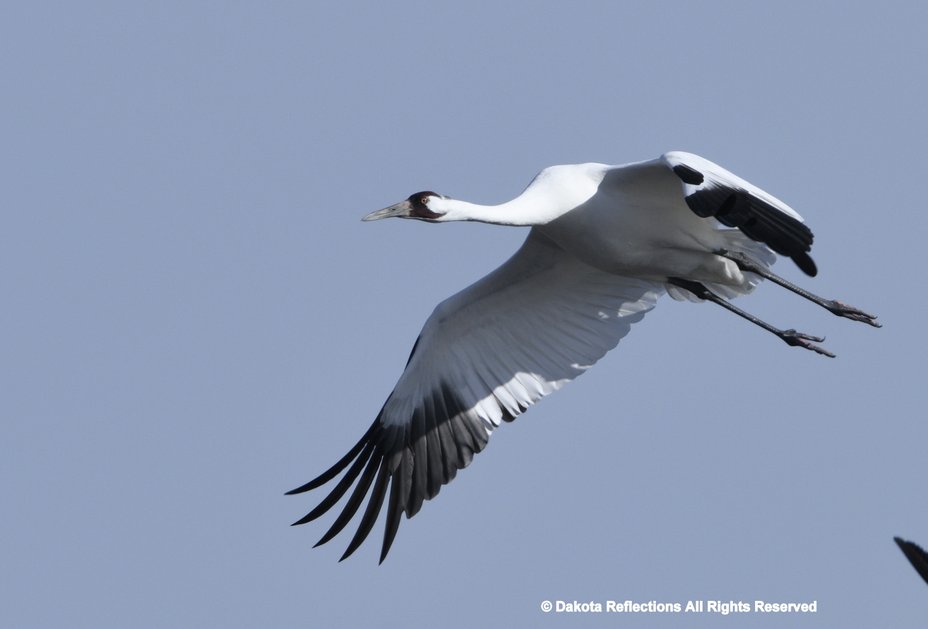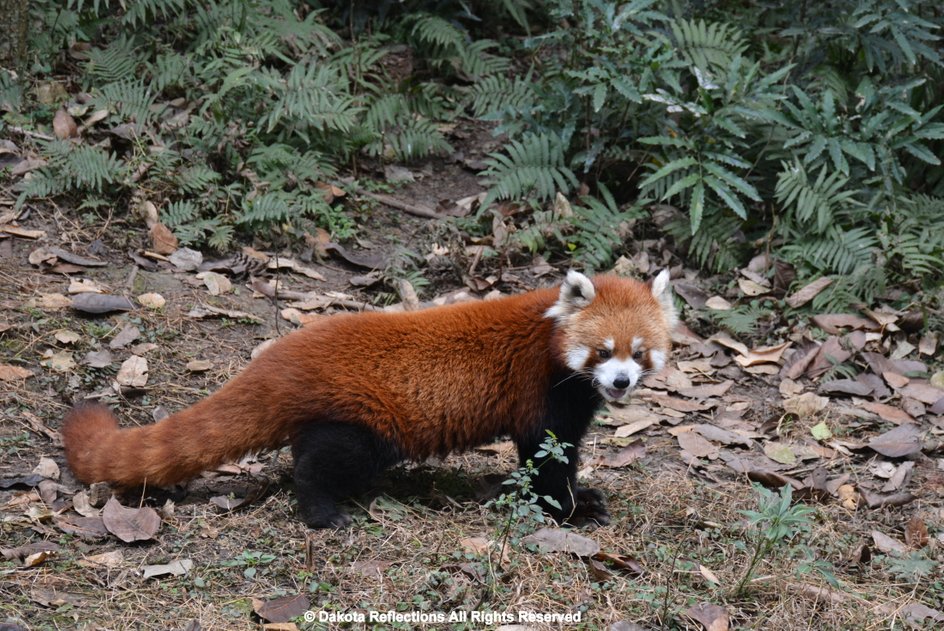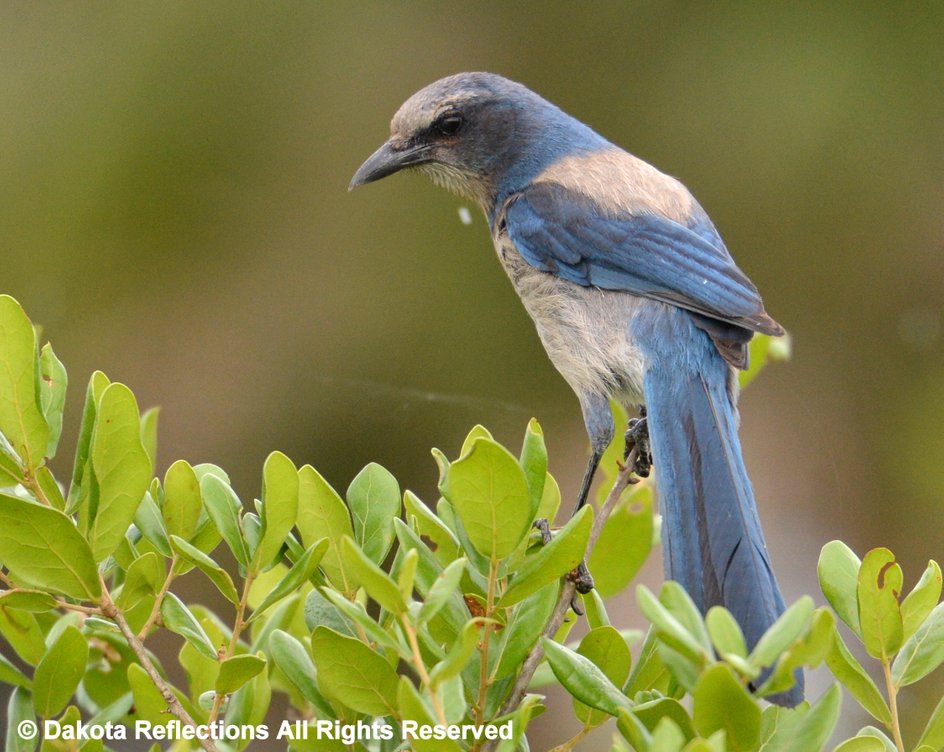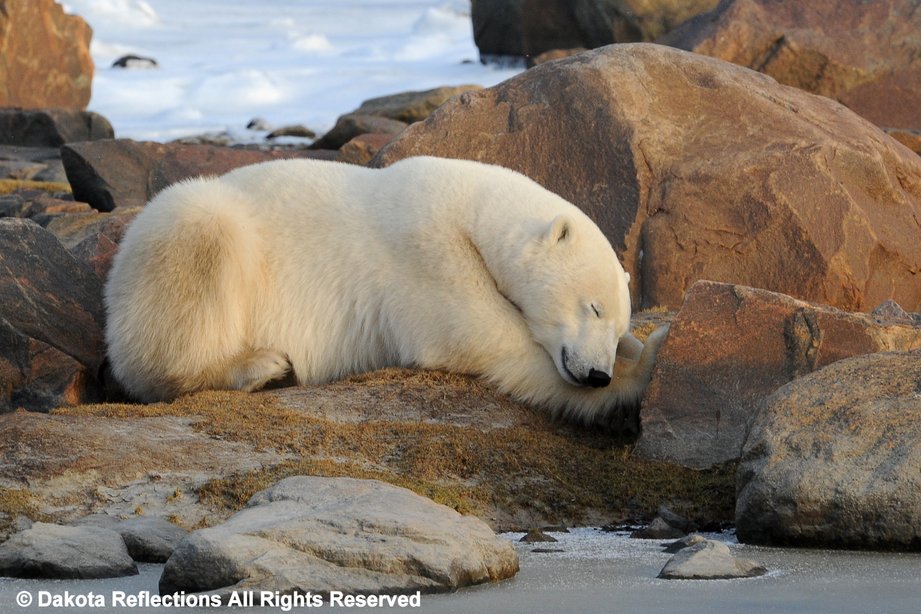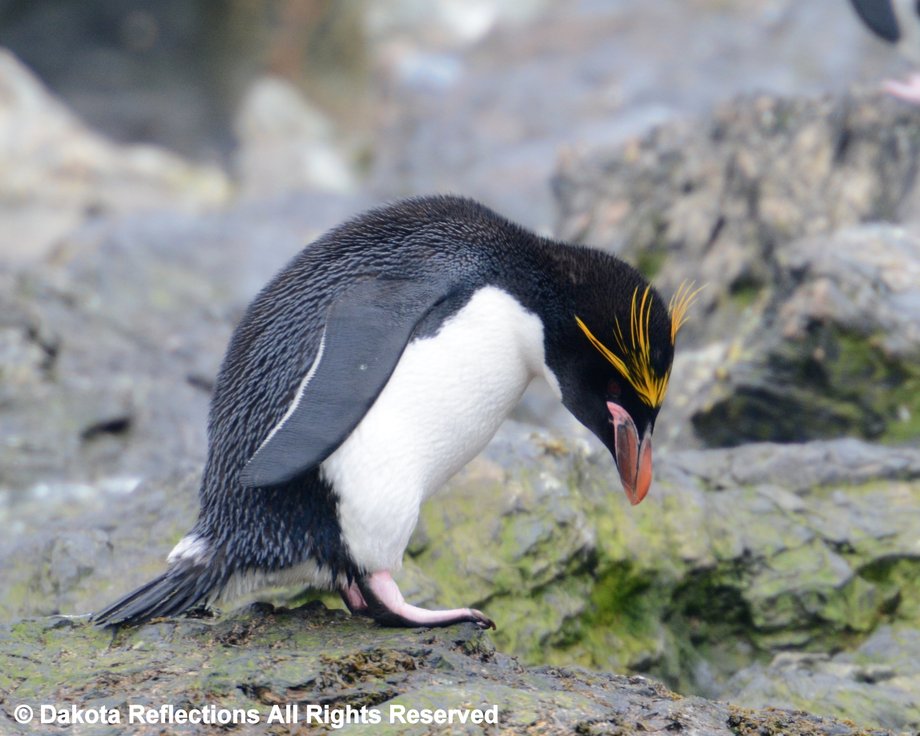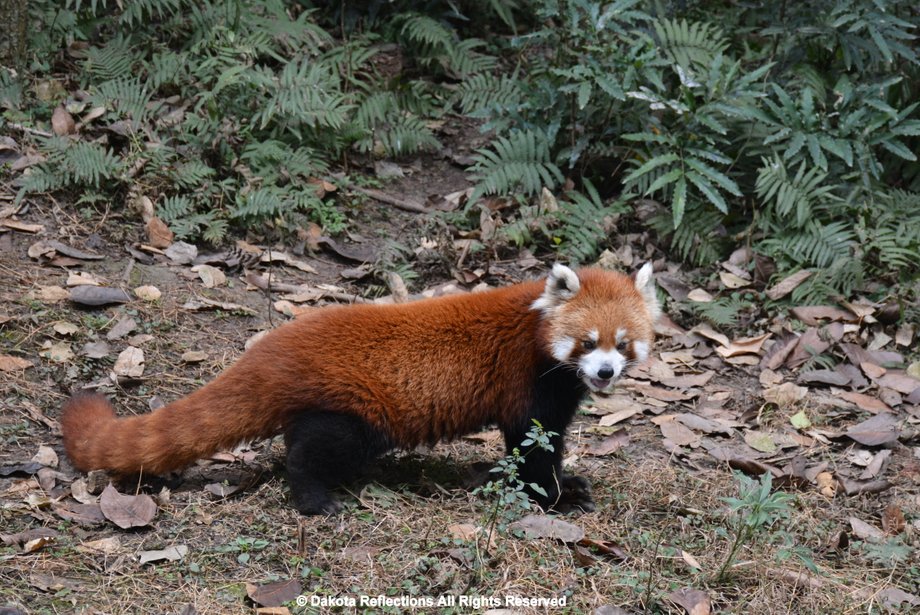Dakota Reflections
Endangered and Vulnerable Species
Giant Panda
1864 in the wild
A Vulnerable Species
How Endangered is a Species?
International Union for Conservation of Nature (IUCN) Red List is the best determination of how endangered a species is.
- A critically endangered species is one which has been categorized as facing a very high risk of extinction in the wild.
- An endangered species is a species which has been categorized as likely to become extinct.
- A vulnerable species is one which has been categorized as likely to become endangered unless the circumstances threatening its survival and reproduction improve.
Endangered or Vulnerable Species
Photographed by Dakota Reflections
- Sumatran rhino- critically endangered <100 in the wild
- Whooping Crane- endangered 440 in the wild
- Red Panda- endangered <10,000
- Florida Scrub Jay- vulnerable 8000 left in the wild
- Cheetah- vulnerable 7100 in the wild
- Giant Panda- vulnerable 1864 in the wild
- Polar Bear- vulnerable 22,000-31,000
- Macaroni Penguin- vulnerable 18 million in the wild but with large population declines
- Southern Rockhopper Penguin- vulnerable 2 million in the wild but with large population declines
- Giant River Otter- endangered- 5000 left in the wild
- Jaguar- near-threatened- 15,000 left in the wild
- The Greater One-Horned Rhinoceros- <200 in early 20th century; 2016- 2575; >3500 now; status endangered
- The Bengal tiger- 1400 in 2002; 1800 in 2010; 2200 in 2014; status-endangered
- Asian Elephants- status endangered 40,000- 50,000 left in Asia
Andatu at 1 month of age
Sumatran Rhino
Way Kambas National Park, Sumatra, Indonesia
Critically Endangered <100 in the wild
Whooping Crane Adult with Juvenile
Aransas National Wildlife Refuge Texas
Endangered
Current Population over 800
Whooping Crane in Flight
Burleigh County, North Dakota
April 2019
After being pushed to the brink of extinction by unregulated hunting and loss of habitat to just 21 wild and two captive whooping cranes by 1941, conservation efforts have led to a limited recovery. The total number of cranes in the surviving migratory population, plus three reintroduced flocks and in captivity, now exceeds 800 birds.
https://en.wikipedia.org/wiki/Whooping_crane
Red Panda
Chengdu China
Endangered
<10,000 in the wild 50% decrease in population in last 30 years
Florida Scrub Jay
Merritt Island National Wildlife Refuge Florida
Vulnerable
8000 in the Wild
Cheetah
White Oak Conservation Center Florida
Vulnerable
7100 in the Wild
Polar Bear
Northern Manitoba on Western Shore of Hudson Bay
Vulnerable
22,000 to 31,000 in the Wild
Macaroni Penguin
Cooper Island Cooper Bay South Georgia
Vulnerable
18 million in the Wild with Large Population Declines
Southern Rockhopper Penguin
Saunders Island Falkland Islands
Vulnerable
2 million in the Wild with Large Population Declines
Giant Panda
Chengdu China
Vulnerable
1864 in the Wild
An Endangered Family Gets a Meal while Baby asks for some Food!
The Giant River Otter lives in a few areas of South America, with only 5000 left after decades of poaching for their fur in the 1950s and 1960s and now habitat destruction. They have lost 80% of their historic range. They are enlisted as endangered. Giant River Otters are very social and they live in extended family groups which can be as large as 20 but more commonly around 8. They build dens to live in. Yesterday, I watched a family group have breakfast after catching fish. Several of the babies cried to be fed and they were given caught fish to eat by their parents. It was wonderful to see their interaction and how they care for each other!
Conservation Status- Endangered- 5000 left in the wild
Photo of the Day for September 9, 2019
Not an Easy Animal to Photograph!
The jaguar is often described as nocturnal, but is more specifically crepuscular (peak activity around dawn and dusk). Both sexes hunt, but males travel farther each day than females, befitting their larger territories. The jaguar may hunt during the day if game is available and is a relatively energetic feline, spending as much as 50–60 percent of its time active. The jaguar's elusive nature and the inaccessibility of much of its preferred habitat make it a difficult animal to sight, let alone study. It ranges across a variety of forested and open terrains, but its preferred habitat is tropical and subtropical moist broadleaf forest, swamps and wooded regions. The jaguar enjoys swimming and is largely a solitary, opportunistic, stalk-and-ambush predator at the top of the food chain. As a keystone species it plays an important role in stabilizing ecosystems and regulating prey populations.
https://en.wikipedia.org/wiki/Jaguar
Conservation Status- Near-threatened- 15,000 left in the wild
Photo of the Day for September 10, 2019
There are just over 2000 Bengal Tigers left in the wild in India. They are endangered and hard to find in the jungle!
Who would the 3-month-old baby walk with and graze with in the large Asian elephant family? Would it be mom, grandmother, or aunt? No, it was baby's 2-year-old brother! Sibling relationships are special and these two siblings were trunk to trunk was they munched their way through 10-foot-tall grass. The baby would come in and out of view until I took this photograph, my favorite on our 2 1/2 week trip to India in March 2019.
Conservation status- endangered 40,000 to 50,000 left in Asia
There were fewer than 200 Indian Rhinos (also called Greater One-horned Rhinoceros) 100 years ago but now there are more than 3000.
The Government of India and many conservation organizations such as the International Rino Foundation have lead the Rhino recovery.
This Greater One-horned Rhino Mom and her Calf were photographed in Kariranga Nationa Park in India in March 2019
More Rhino photographs and information found in India page under Asia section
Conservation Status- Vulnerable
How Are the Chinese People Conserving the Giant Panda?
History
- 1974 China's first nationwide Giant Panda survey- estimated 2400 pandas
- 1978 Professor Hu Jinchu established the world's first Giant Panda observation center, Wuyi Shed, in the Wolong Nature Reserve in the Minshan Mountains
- 1980 the World Wildlife Fund became the first international organization to use the Giant Panda as its logo and donated $1 million to have establish the Wolong Giant Panda Ceter
- 1985 to 1989 China Giant Panda study showed only 1,100 pandas remained
- 1987 Chengdu Research Base of Giant Panda Breeding, or Chengdu Panda Base, started with 6 giant pandas that were rescued from the wild
- September 7, 1991 two cubs born to Panpan and Dongdong at Wolong
- 1998 Chinese government began forest conservation program for pandas
- 2000 12 cubs born at the National Panda Conservation Research Center in Wolong
- 2003- third national Giant Panda survey- 1600 pandas in six mountain systems, 40 protected areas in China for Giant Pandas
- 2003- Xiangxiang first Giant Panda in captivity to be released into the wild, he died 2007
- 2004- Bifengxia Giant Panda Base opened
- 2005- 56 protected areas in China for Giant Pandas
- 2011- Dujiangyan Panda Base, located at Shiqiao Village, Qingchengshan Town opened
- 2014- 1,864 giant pandas in the wild and over 300 in captivity
- September 2016 International Union for the Conservation of Nature (IUCN) upgraded the giant panda’s status from “endangered” to “vulnerable”
Giant Pandas in the United States
History
- Lingling ("exquisite jade"- found as cub in 1971 Mahuang Valley) and Xingxing sent to the National Zoo, Washington, DC, did not have cubs that survived more than a few days
National Zoo in Washington, DC
- Tian Tian ("more and more") arrived December 2000
- Mei Xiang ("beautiful fragrance") arrived in December 2000
- Babies:
- Tai Shan (""peaceful mountain") born July 9 2005, first cub born at National Zoo to survive, returned to February 4, 2010 (on the same flight as Mei Lan from Zoo Atlanta), first to the Bifengxia Panda Base, in Ya'an, Sichuan and then in 2014 moved again to the Dujiangyan base of Sichuan Province's China Conservation and Research Center for the Giant Panda
- Bao Bao ("treasure") female cub born Aug. 23 2013, returned to Duijiangyan Base (part of the China Conservation and Research Centre for Giant Pandas) on February 21, 2017,
- Bei Bei ("precious" or "treasure") born August 22, 2015 names Bei Bei" by Michelle Obama and Peng Liyuan, the first ladies of the United States and the People's Republic of China
San Diego Zoo
- Gaogao arrived in January 2003. He was found at 6 months of age in Wolong on April 6, 1993
- Bai Yun
- Babies:
- Hua Mei ("China/USA") was born August 21, 1999 and was the first giant panda cub to survive to adulthood in the United States. She was born to Bai Yun (mother) and Shi Shi (father) at the San Diego Zoo. She was sent to Wolong, China in 2003 and then to Bifengxia after the 2008 earthquake and has had a total of 10 cubs
- Mei Sheng ("Beautiful Life" or "Born in the USA") born August 19, 2003 is a male giant panda, first offspring of Bai Yun and Gao Gao, sent to Wolong, China on November 5, 2007. After the 2008 Sichuan earthquake, Mei Sheng was relocated to Bifengxia Panda Base, just outside Ya'an. had one cub, Shu Qing, with Ying Ying
- Su Lin Su Lin (Beautiful Jade") a female cub born on August 2, 2005. conceived via natural mating, Su Lin and her sister Zhen Zhen were sent to Bifengxia Panda Base in China on September 24, 2010
- Zhen Zhen ("Precious") is a female cub born August 3, 2007 and sent to Bifengxia Panda Base in China on September 24, 2010
- Yun Zi ("Son of Cloud (Yun)") male cub born on August 5, 2009 and weighed 4 ounces and was returned to China in January 2014 and lives at Dujiangyan Base (part of the China Conservation and Research Centre for Giant Pandas)
- Xiao Li Wu ("little gift") a male cub born July 29, 2012
Zoo Atlanta
- Lun Lun
- Yang Yang ("Nine Nine, born 9/9/1999)
- Babies:
- Mei Lan ("Atlanta Beauty") male cub born on September 6, 2006, after a record-setting 35-hour labor, originally identified by zoo staffers as female, Mei Lan was determined to be male by staff in China at the Chengdu Research Base of Panda Breeding, sent to Chengdu, China on February 4, 2010
- Xi Lan ("Atlanta's joy") is a male cub born August 30, 2008 and currently residing at Zoo Atlanta
- Po, a female cub, born 3 November 2010 and was sent to the Chengdu Research Base of Giant Panda Breeding
- Mei Lun and Mei Huan, were the first surviving pair of giant panda twins ever born in the U.S. and were sent to Chengdu Research Base of Giant Panda Breeding on November 3, 2016
- Mei Huan born July 15, 2013- see above
- Ya Lun ("Lun Lun's elegant and happy daughters") female twin cub born September 3, 2016
- Xi Lun ("Lun Lun's elegant and happy daughters") female twin cub born September 3, 2016
Memphis Zoo
- Ya Ya ("beautiful little girl") and
- Le Le ("happy happy") arrived in Memphis from Beijing together in April 2003, no babies yet
References:
- Fang Min, The Giant Panda, Better Link Press, Shanghai Press and Publishing Developing Company, Shanghai, China, 2011
- Susan B. Barnes, Where to find giant pandas in the US, USA TODAY, September 18, 2014
- wikipedia- giant panda
There is another Panda in China- The Red Panda!
Red pandas are not related to the Giant Panda and are considered living fossils because no other animal is closely related. Red pandas' somewhat nearest relatives are weasels, raccoons and skunks. Red pandas share several characteristics with giant pandas: overlapping habitat, bamboo in the diet and the modified wrist bone that serves as a thumb.
Red pandas have five toes that are widely separated and semi-retractable claws. They share the giant panda's "thumb:" a modified wrist bone—that is used to help grasp bamboo when feeding.
Red pandas can be found in northern Myanmar (Burma), west Sichuan and Yunnan Provinces of China and in Nepal, India and Tibet in high altitude temperate forests.
Approximately 10,000 red pandas are left in the world and they are considered a vulnerable species.
"Saving Giant Pandas with San Diego Zoo Global!" Webinar by San Diego Zoo Global, Wednesday, March 15, 2017
Brief Overview of San Diego's Giant Panda Program
Story of hope, if we work together can save species from extinction.
Understanding genetics
Behavioral biology
Reproductive biology- giant pandas are solitary animals and getting together can be difficult
Building relationships with collegues in China
Conservation Takes Time
At two weeks of age, the black color shows up on panda cubs in the skin as pigmentation then the fur changes color.
They eat 14 hours a day and poop up to 50 times a day.
Large bamboo die off in 1970s accompanied by habitat fragmentation lead to the crash in giant panda numbers.
In mid 1990s, captive population was not doing well 100 in captivity and only 40 percent females were having babies and only 7 breeding males were in China. Now, over 400 are in captivity, 80% females are reproducing.
Pandas use vocalizations and scent to communicate during mating. Scent marking occurs 2 weeks prior to mating then vocalizations start about 1 week prior to mating.
Community of giant panda researchers. Excellent communication with Wolong and exchange of researchers.
Bai Yun has been a perfect panda. Very good mom and good relationship with Gao Gao who is an amazing breeder.
What does it mean to be a good panda mom. Used video and audio to record activity in den. Giant pandas are fascinating to observe, start off as helpless cubs who go under significant changes, including how to eat bamboo of cub watching mom eat bamboo.
Bifengxia is the primary breeding facility- 20 cubs per year. Wolong is changing to more of a release into the wild facility.
Greatest change in panda recovery has been habitat preservation.

